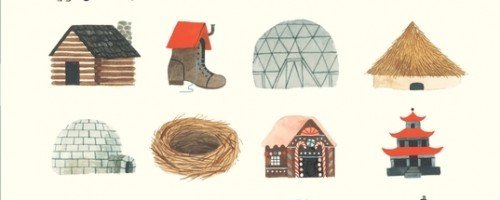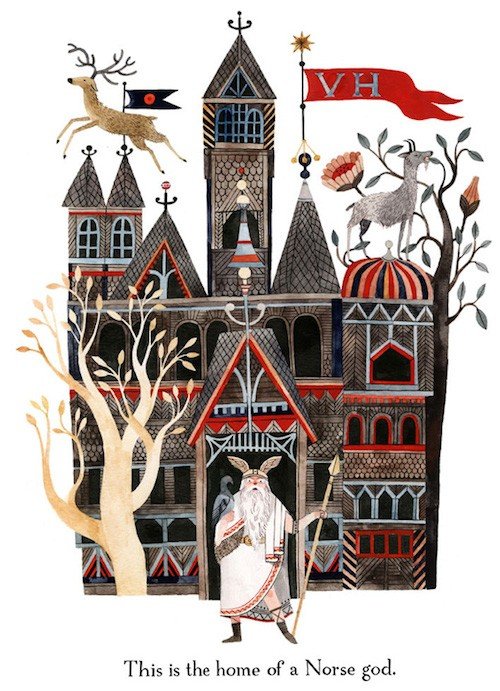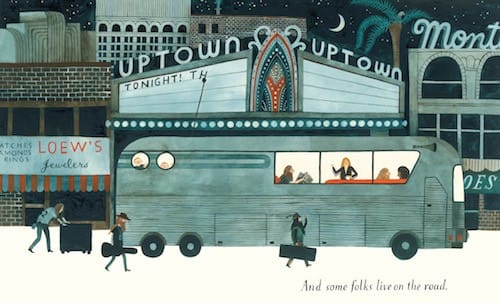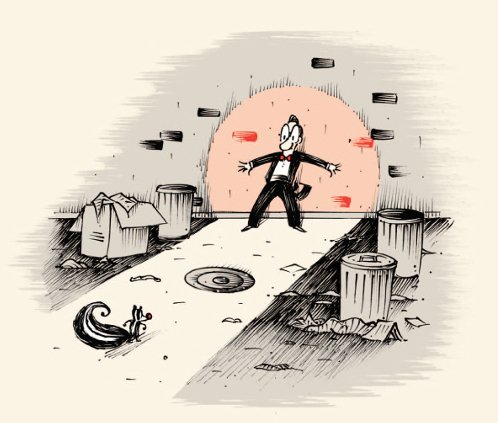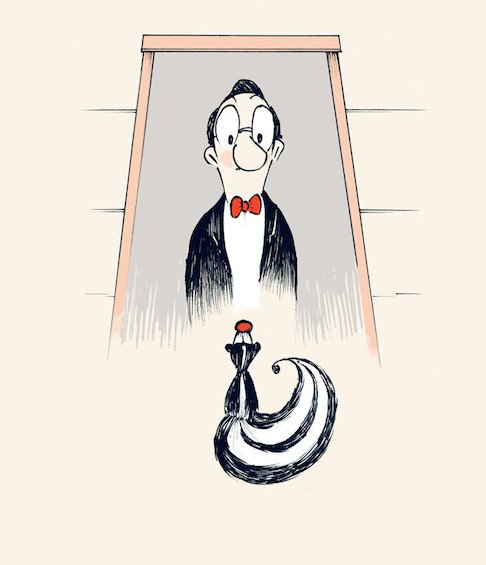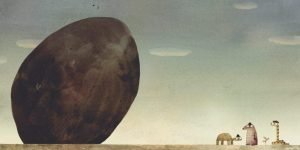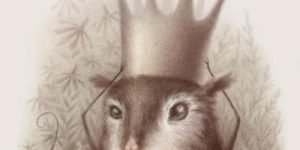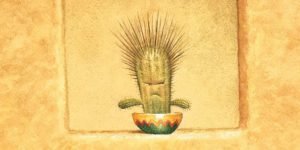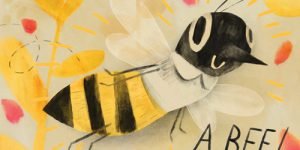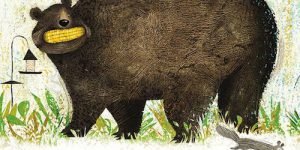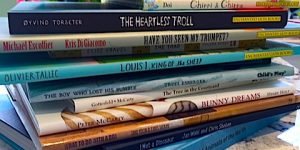A very important person in my life once said that if at all possible, when writing, try to avoid cliché. I do my best. However, I can’t help expecting cliché from the children’s section in a bookstore. According to the American Library Association, there are 21,878 children’s books published every year, and I would guess that 21,700 of those are cliché. It’s endemic. Also, most authors have not met my very important person (unfortunately for them), and so have not been given this useful piece of advice.
The reason I am talking about cliché is that the recently published Home, which admittedly does tread over familiar territory, could have lapsed into cliché, but Carson Ellis takes the subject matter and twists it on its end. Her interpretation of the word home, and its depiction, is inventive and thoughtful. As one would expect of a Carson Ellis book (her first as author), the art is beautiful. The over-size pages allow the gouache & ink illustrations to breath in perfect balance with the white space. Home is an immersive book. Once you enter, you’ll never want to leave.
There is no storyline in Home. Each page or double-page spread is a type of home. Sometimes the home is an actual abode, sometimes it is of no fixed address:
Home is a house in the country.
And some folks live on the road.
This is the home of a Kenyan blacksmith.
Sea homes. Bee homes. Hollow tree homes.
And so on. The narrative is in the illustrations, each of which invite further investigation. Why is that kid mooning his family on top of the shoe where they presumably live? Is that the artist herself, down below, drawing on the shoe? And are there really people, or something, living on the moon? There are a lot of laughs, some hidden, some obvious, in Home, but the best is the appearance of The Grateful Dead riding in their home – a tour bus, with Jerry Garcia visible in one of the windows. Then again, maybe it’s a bunch of hippie Deadheads following the band, or maybe it isn’t the Dead at all. I know that Ellis designs album covers for The Decemberists, so perhaps it’s them on the bus. This amusing detail will be lost on children, but even without knowing the character’s true identities, the illustration would still be funny and engaging.
Interestingly, the second last page is reserved for the artist in her studio, and on the wall are trinkets and references from the previous pages, including an ‘all-access pass’ lanyard. To the Dead? To the Decemberists? By giving just enough detail, visually and narratively, Ellis leaves room for additional storytelling. She poses interesting questions and answers a few, but for the most part, Home is a place of imagination. Home could be anything, or anywhere.
My favourite journey is the one home. I’m an introvert. A homebody. It’s not that I don’t like to travel, but when I do, a part of me can’t wait for it to be over so that I can relive it. At home. I am predisposed to love a book that celebrates my favourite place, but I think I would love anything by Carson Ellis. I first became aware of her art with the 2010 publication of Dillweed’s Revenge: A Deadly Dose of Magic, written by Florence Parry Heide. This book in particular has a comically macabre, Goreyesque flavour, probably because of the subject matter, but I don’t see this in Home. It is comic, but Home is also a flat-out work of art – stunning, culturally diverse, and beautifully imagined. It is one of the most exquisite books published this year (or any year), and I expect to see it on many best-of lists at the end of 2015, including mine.
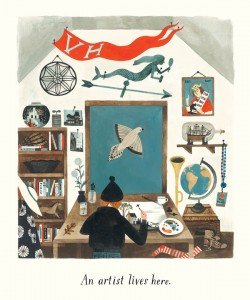 CARSON ELLIS was born in 1975 in Vancouver, Canada. She was raised in suburban New York and college-educated at the University of Montana in Missoula, where she earned a BFA in Painting in 1998. She received a 2010 Silver Medal from the Society of Illustrators for her art in Dillweed’s Revenge. She is the illustrator of The Composer is Dead by Lemony Snicket, and has collaborated with her husband Colin Meloy on the best-selling Wildwood series. Carson lives in Portland, Oregon with her husband and sons, and according to her website, an unfathomable multitude of tree frogs.
CARSON ELLIS was born in 1975 in Vancouver, Canada. She was raised in suburban New York and college-educated at the University of Montana in Missoula, where she earned a BFA in Painting in 1998. She received a 2010 Silver Medal from the Society of Illustrators for her art in Dillweed’s Revenge. She is the illustrator of The Composer is Dead by Lemony Snicket, and has collaborated with her husband Colin Meloy on the best-selling Wildwood series. Carson lives in Portland, Oregon with her husband and sons, and according to her website, an unfathomable multitude of tree frogs.
